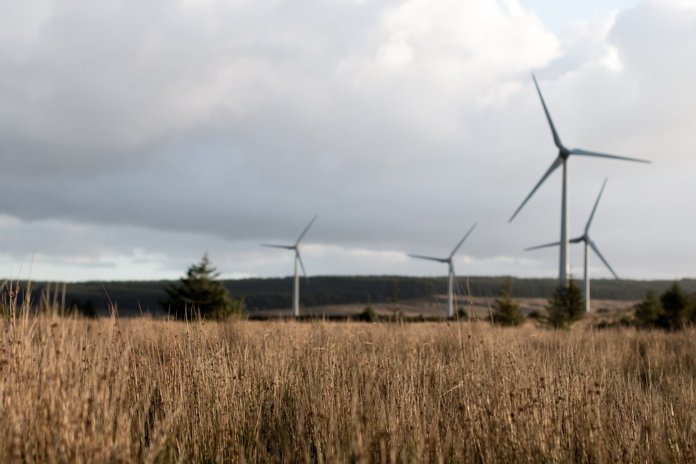A newly introduced bill in Ohio is designed to provide incentives for clean energy projects. However, the American Wind Energy Association (AWEA) argues that the legislation would be detrimental to the wind industry, and other clean energy groups say the bill is a bailout for the state’s nuclear industry.
State Reps. Jamie Callender, R-Concord Township, and Shane Wilkin, R-Hillsboro, have introduced legislation (H.B.6) that would create the Ohio Clean Air Program (OCAP), which would offer incentives to build and maintain zero- and reduced-emission generation facilities in the state while lowering customers’ electric utility bills, the lawmakers claim.
OCAP, to be administered by the Ohio Air Quality Development Authority (OAQDA), seeks to offer an alternative way to encourage cleaner energy production in Ohio.
The bill would allow an electric generating facility to apply for certification as a “clean air resource” in order to participate in OCAP, which would be funded through a monthly per-account charge billed to retail electric customers.
Certified clean air resources, which produce zero carbon emissions, would report each month to the OAQDA their megawatt-hours generated and receive credits based on a formula. The OAQDA would also develop a program for reduced-emission generators. OCAP is expected to collect approximately $300 million per year.
Currently, Ohio’s residential, commercial and industrial energy customers, through mandates on their bills, pay monthly charges for renewable and energy efficiency/peak demand services. For most customers, the OCAP charges would be lower than the amount charged by current mandates, the lawmakers claim.
“The good news for electric customers is that for many, their bills will actually go down,” says Callender, chair of the Ohio House Public Utilities Committee. “This is because there are already charges on their bills in the form of a renewable portfolio standard and energy efficiency standard/peak demand. The new program seeks to offer an alternative way to encourage cleaner energy production in Ohio.“
“This legislation looks to Ohio’s energy future by investing in clean energy,” adds Wilkin. “It addresses the global need of generating power and balancing it with a portfolio of supporting cleaner resources to meet the state’s demand.”
On the other hand, Andrew Gohn, eastern region director of state affairs at AWEA, says the bill would “devastate Ohio’s clean energy progress, gutting the state’s clean energy commitments and replacing them with customer bailouts for older, uncompetitive power plants.”
With 729 MW, Ohio currently ranks 25th in the U.S. for installed wind capacity, according to AWEA.
“Ohio’s commitment to renewable energy has driven job creation and economic development in the state, with a nation-leading 60 factories that build wind turbine components,” he continues. “We hope the majority of lawmakers reject this attempt to undermine Ohio’s clean energy advances.”
Specifically, according to the Sierra Club, the bill effectively provides a financial bailout to two FirstEnergy nuclear power plants.
“It guts Ohio’s clean energy and efficiency standards while forcing electric customers to pay more each month to bail old, uneconomic nuclear plants – all while calling it a clean air program,” comments Neil Waggoner, campaign representative for the Sierra Club’s Beyond Coal Campaign in Ohio. “The idea of this would be laughable if it weren’t for the fact that it could become a regressive and destructive law.”
“As Sierra Club has previously stated, if the legislature is really concerned about carbon and clean air, they should pursue a comprehensive energy agenda with a focus on how to increase investment in energy efficiency; expand clean energy development; and support communities disproportionately impacted by the transition away from, and retirement of, dirty energy generation,” he continues.
Waggoner calls the bill “a scheme that is just a new energy tax on Ohio electric customers to maintain uneconomic energy generation and reward FirstEnergy’s bad business decisions.”
Likewise, Daniel Sawmiller, the Natural Resources Defense Council’s Ohio energy policy director, says, “Ohio urgently needs to update its energy policies to match the national trend towards cleaner, cheaper and more reliable renewable energy and programs that reduce the amount of energy wasted in our homes and businesses. The bill introduced [this week] doesn’t create the clean energy future that our state desperately needs and that Ohioans are demanding, but we look forward to working together with state leaders to further policies that support a truly clean energy future.”
The bill will be assigned to the Ohio House Energy and Natural Resources Committee and will be considered by the Subcommittee on Energy Generation.
“We all have a duty to be stewards of the environment,” says Larry Householder, speaker of the Ohio House of Representatives. “We can all agree that we need to improve the quality of our air, water and ground. We must ensure these are as clean as practical and we leave our environment healthy for our children and grandchildren. This program will steer our state in the right energy and clean air direction for 11.6 million Ohioans.”





We can only hope that Ohio and every other state will opt for nuclear, especially using the new modular technologies to replace coal. If we put a value on landscape intensity, habitat and other “natural capital” wind loses convincing.
The Bailout bill – Ohio HB 6, is a regressive tax which puts the same burden on a customer who uses $50 worth of electricity per month as it does on a customer who uses $500 worth of electricity per month. The bill makes Ohio’s efficiency standards an opt-in program, where every single customer of every size must send a letter to the PUCO to authorize paying their fair share of program costs – in 2017 customers paid $190.1 million and saved $874 million. In addition avoided new power plants and transmission equipment were valued at about $3 billion, saved… Read more »